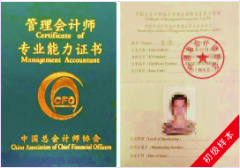硕士研究生入学统一考试英语试题(二)
Section Ⅱ Reading Comprehension
Part A
Directions:
Read the following four texts. Answer the questions below each text by choosing A, B, C, or D. Mark your answers on ANSWER SHEET 1. (40 points)
Text 1
While still catching-up to men in some spheres of modern life, women appear to be way ahead in at least one undesirable category. Women are particularly susceptible to developing depression and anxiety disorders in response to stress compared to men, according to Dr. Yehuda, chief psychiatrist at New York''s Veteran''s Administration Hospital.
Studies of both animals and humans have shown that sex hormones somehow affects the stress response, causing females under stress to produce more of the trigger chemicals than do males under the same conditions. In several of the studies, when stressed-out female rats had their ovaries (the female reproductive organs) removed, their chemical responses became equal to those of the males.
Adding to a woman''s increased dose of stress chemicals, are her increased opportunities for stress. It''s not necessarily that women don''t cope as well. It''s just that they have so much more to cope with, says Dr. Yehuda. Their capacity for tolerating stress may even be greater than men''s, she observes, It''s just that they''re dealing with so many more things that they become worn out from it more visibly and sooner.
Dr. Yehuda notes another difference between the sexes. I think that the kinds of things that women are exposed to tend to be in more of a chronic or repeated nature. Men go to war and are exposed to combat stress. Men are exposed to more acts of random physical violence. The kinds of interpersonal violence that women are exposed to tend to be in domestic situations, by, unfortunately, parents or other family numbers, and they tend not to be one-shot deals. The wear-and-tear that comes from these longer relationships can be quite devastating.
Adeline Alvarez married at 18 and gave birth to a son, but wad determined to finish college. I struggled a lot to get the college degree. I was living in so much frustration that that was my escape, to go to school, and get ahead and do better. Later her marriage ended and she became a single mother. It''s the hardest thing to take care of a teenager, have a job, pay the rent, pay the car payment, and pay the debt. I lived from paycheck to paycheck.
Not everyone experiences the kinds of severe chronic stresses Alvarez describes. But most women today are coping with a lot of obligations, with few breaks, and feeling the strain. Alvarez''s experience demonstrates the importance of finding ways to diffuse stress before it threatens your health and your ability to function.
21. Which of the following is true according to the first two paragraphs?
[A] Women are biologically more vulnerable to stress.
[B] Women are still suffering much stress caused by men.
[C] Women are more experienced than men in coping with stress.
[D] Men and women show different inclinations when faced with stress.
22. Dr. Yehuda''s research suggests that women
[A] Need extra doses of chemicals to handle stress.
[B] Have limited capacity for tolerating stress.
[C] Are more capable of avoiding stress.
[D] Are exposed to more stress.
23. According to Paragraph 4, the stress women confront tends to be
[A] domestic and temporary.
[B] irregular and violent.
[C] durable and frequent.
[D] trivial and random.
24. The sentence I lived from paycheck to paycheck.(Line 6, Para. 5) shows that
[A] Alvarez cared about nothing but making money.
[B] Alvarez''s salary barely covered her household expenses.
[C] Alvarez got paychecks from different jobs.
[D] Alvarez paid practically everything by check.
25. Which of the following would be the best title for the text?
[A] Strain of Stress: No Way Out?
[B] Responses to Stress: Gender Difference
[C] Stress Analysis: What Chemicals Say
[D] Gender Inequality: Women Under Stress
Text 2
It used to be so straightforward. A team of researchers working together in the laboratory would submit the results of their research to a journal. A journal editor would then remove the authors names and affiliations from the paper and send it to their peers for review. Depending on the comments received, the editor would accept the paper for publication or decline it. Copyright rested with the journal publisher, and researchers seeking knowledge of the results would have to subscribe to the journal.
No longer. The Internet and pressure from funding agencies, who are questioning why commercial publishers are making money from government-funded research by restricting access to it- is making access to scientific results a reality. The Organization for Economic Co-operation and Development (OECD) has just issued a report describing the far-reaching consequences of this. The report, by John Houghton of Victoria University in Australia and Graham Vickery of the OECD, makes heavy reading for publishers who have, so far, made handsome profits. But it goes further than that. It signals a change in what has, until now, been a key element of scientific endeavor.
The value of knowledge and the return on the public investment in research depends, in part, upon wide distribution and ready access. It is big business. In America, the core scientific publishing market is estimated at between $7 billion and $11 billion. The International Association of Scientific, Technical and Medical Publishers says that there are more than 2,000 publishers worldwide specializing in these subjects. They publish more than 1.2 million articles each year in some 16,000 journals.
This is now changing. According to the OECD report, some 75% of scholarly journals are now online. Entirely new business models are emerging; three main institutional subscribers pay for access to a collection of online journal titles through site-licensing agreements. There is open-access publishing, typically supported by asking the author (or his employer) to pay for the paper to be published. Finally, there are open-access archives, where organizations such as universities or international laboratories support institutional repositories. Other models exist that are hybrids of these three, such as delayed open-access, where journals allow only subscribers to read a paper for the first six months, before making it freely available to everyone who wishes to see it. All this could change the traditional form of the peer-review process, at least for the publication of papers.
26. In the first paragraph, the author discusses
[A] the background information of journal editing.
[B] the publication routine of laboratory reports.
[C] the relations of authors with journal publishers.
[D] the traditional process of journal publication.
27. Which of the following is true of the OECD report?
[A] It criticizes government-funded research.
[B] It introduces an effective means of publication.
[C] It upsets profit-making journal publishers.
[D] It benefits scientific research considerably.
28. According to the text, online publication is significant in that
[A] it provides an easier access to scientific results.
[B] it brings huge profits to scientific researchers.
[C] it emphasizes the crucial role of scientific knowledge.
[D] it facilitates public investment in scientific research.
29. With the open-access publishing model, the author of a paper is required to
[A] cover the cost of its publication.
[B] subscribe to the journal publishing it.
[C] allow other online journals to use it freely.
[D] complete the peer-review before submission.
30. Which of the following best summarizes the main idea of the passage?
[A] The Internet is posing a threat to publishers.
[B] A new mode of publication is emerging.
[C] Authors welcome the new channel for publication.
[D] Publication is rendered easier by online service.
Text 3
In the early 1960s Wilt Chamberlain was one of only three players in the National Basketball Association (NBA) listed at over seven feet. If he had played last season, however, he would have been one of 42. The bodies playing major professional sports have changed dramatically over the years, and managers have been more than willing to adjust team uniforms to fit the growing numbers of bigger, longer frames.
The trend in sports, though, may be obscuring an unrecognized reality: Americans have generally stopped growing. Though typically about two inches taller now than 140 years ago, today''s people- especially those born to families who have lived in the U.S. for many generations- apparently reached their limit in the early 1960s. And they aren’t likely to get any taller. In the general population today, at this genetic, environmental level, we''ve pretty much gone as far as we can go, says anthropologist William Cameron Chumlea of Wright State University. In the case of NBA players, their increase in height appears to result from the increasingly common practice of recruiting players from all over the world.
Growth, which rarely continues beyond the age of 20, demands calories and nutrients?notably, protein?to feed expanding tissues. At the start of the 20th century, under-nutrition and childhood infections got in the way. But as diet and health improved, children and adolescents have, on average, increased in height by about an inch and a half every 20 years, a pattern known as the secular trend in height. Yet according to the Centers for Disease Control and Prevention, average height- 5′9?for men, 5′4?for women- hasn''t really changed since 1960.
Genetically speaking, there are advantages to avoiding substantial height. During childbirth, larger babies have more difficulty passing through the birth canal. Moreover, even though humans have been upright for millions of years, our feet and back continue to struggle with bipedal posture and cannot easily withstand repeated strain imposed by oversize limbs. There are some real constraints that are set by the genetic architecture of the individual organism, says anthropologist William Leonard of Northwestern University.
Genetic maximums can change, but don''t expect this to happen soon. Claire C. Gordon, senior anthropologist at the Army Research Center in Natick, Mass, ensures that 90 percent of the uniforms and workstations fit recruits without alteration. She says that, unlike those for basketball, the length of military uniforms has not changed for some time. And if you need to predict human height in the near future to design a piece of equipment, Gordon says that by and large, you could use today’s data and feel fairly confident.
31. Wilt Chamberlain is cited as an example to
[A] illustrate the change of height of NBA players.
[B] show the popularity of NBA players in the U.S……
[C] compare different generations of NBA players.
[D] assess the achievements of famous NBA players.
32. Which of the following plays a key role in body growth according to the text?
[A] Genetic modification.
[B] Natural environment.
[C] Living standards.
[D] Daily exercise.
33. On which of the following statements would the author most probably agree?
[A] Non-Americans add to the average height of the nation.
[B] Human height is conditioned by the upright posture.
[C] Americans are the tallest on average in the world.
[D] Larger babies tend to become taller in adulthood.
34. We learn from the last paragraph that in the near future
[A] the garment industry will reconsider the uniform size.
[B] the design of military uniforms will remain unchanged.
[C] genetic testing will be employed in selecting sportsmen.
[D] the existing data of human height will still be applicable.
35. The text intends to tell us that
[A] the change of human height follows a cyclic pattern.
[B] human height is becoming even more predictable.
[C] Americans have reached their genetic growth limit.
[D] the genetic pattern of Americans has altered.
閵嗏偓
閵嗏偓
课程推荐
- 注册会计师普通班
- 注册会计师特色班
- 注册会计师精品班
- 注册会计师实验班
| 课程班次 | 课程介绍 | 价格 | 购买 |
|---|---|---|---|
| 普通班 | 班次特色 |
200元/一门 |
购买 |
| 课程班次 | 课程介绍 | 价格 | 购买 |
|---|---|---|---|
特色班 |
班次特色 |
350元/一门 | 购买 |
| 课程班次 | 课程介绍 | 价格 | 购买 |
|---|---|---|---|
| 精品班 | 班次特色 |
650元/一门 | 购买 |
| 课程班次 | 课程介绍 | 价格 | 购买 |
|---|---|---|---|
| 实验班 |
班次特色 |
900元/一门 | 购买 |
- 注册会计师机考模拟系统综合版
最新新闻
网站地图
专业知识水平考试:
考试内容以管理会计师(中级)教材:
《风险管理》、
《绩效管理》、
《决策分析》、
《责任会计》为主,此外还包括:
管理会计职业道德、
《中国总会计师(CFO)能力框架》和
《中国管理会计职业能力框架》
能力水平考试:
包括简答题、考试案例指导及问答和管理会计案例撰写。
- 管理会计师PCMA 免费试听
- 中级管理会计师 免费试听
- 税务管理师 免费试听
- 智能财务师 免费试听
- 国际注册会计师 免费试听
- 国际财务管理师 免费试听
- 初级会计职称考试 免费试听
- 中级会计职称考试 免费试听
- 注册会计师考试 免费试听
- 全国外贸会计考试 免费试听
- 会计实务操作 免费试听
- 管理会计师 免费试听
-
初级会计职称招生方案
·特色班
·精品班
·实验班

初级会计职称网上辅导 -
中级会计职称招生方案
·普通班
·特色班
·精品班

中级会计职称网上辅导
专业知识水平考试:
考试内容以管理会计师(中级)教材:
《风险管理》、
《绩效管理》、
《决策分析》、
《责任会计》为主,此外还包括:
管理会计职业道德、
《中国总会计师(CFO)能力框架》和
《中国管理会计职业能力框架》
能力水平考试:
包括简答题、考试案例指导及问答和管理会计案例撰写。


 您现在的位置:
您现在的位置:







